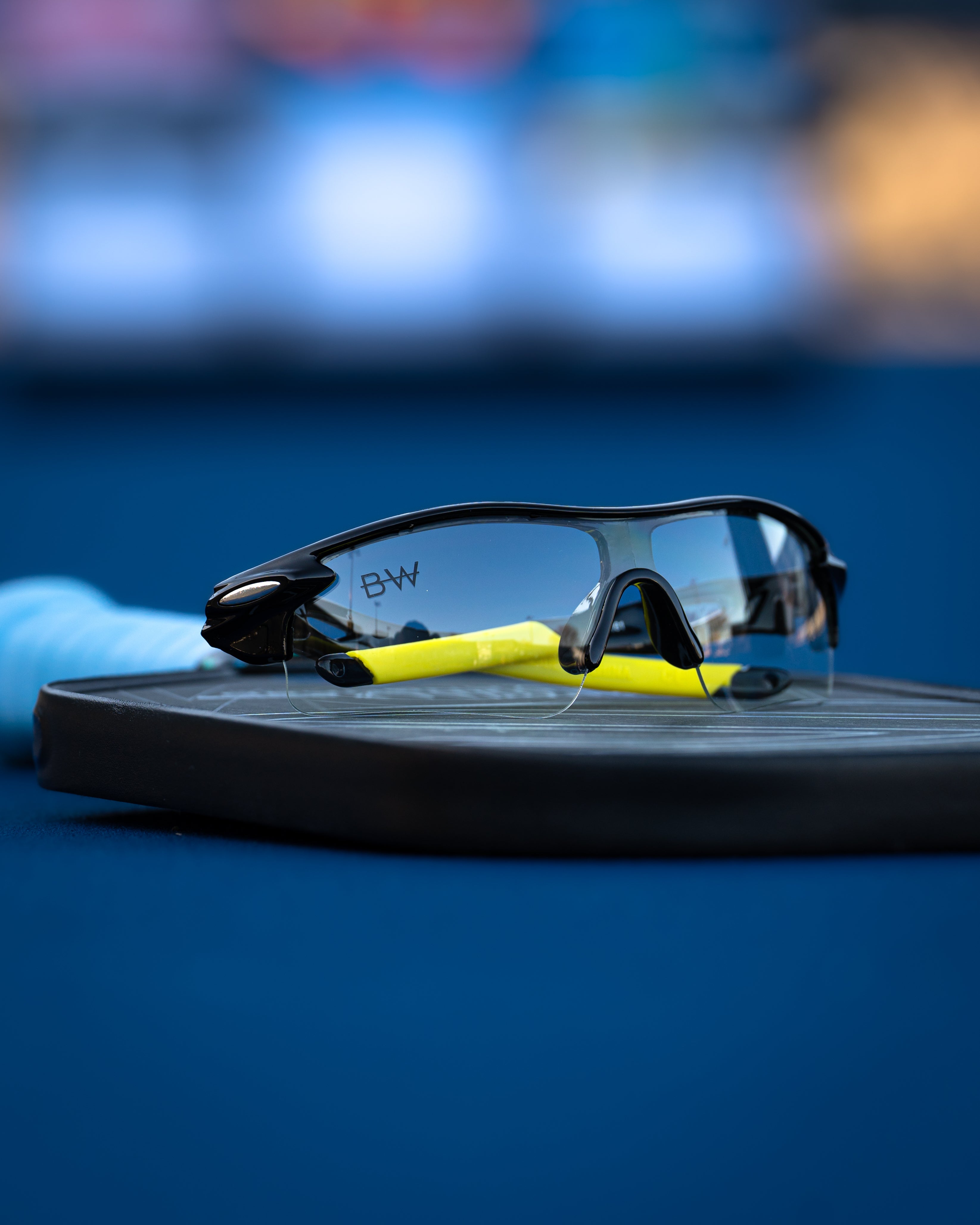How Our RX Glasses Compare to Contacts for Dusty Conditions
Share
How Our RX Glasses Compare to Contacts for Dusty Conditions
If you've ever played a windy tournament or trained on a dusty court, you know how quickly airborne grit can turn into an optical nightmare. For athletes with prescription needs, the question often comes down to this: Should I wear RX glasses or contacts in dusty conditions?
At Blinded Wear, we’ve helped thousands of competitive players navigate that decision. While contacts seem like a convenient option, they often fall short in performance and protection when dust is involved. Our RX glasses are engineered not just to improve vision, but to act as a barrier against wind, particles, and eye irritation.
This guide breaks down the pros and cons of contacts vs. RX glasses in dusty, high-wind environments — and shows why Blinded Wear’s prescription sports eyewear is the smarter choice for dusty tournament play.
Why Dust Is a Problem for Athletes with Vision Correction
Outdoor courts — especially those in arid regions, on unpaved surfaces, or near landscaping — produce airborne particles that can:
- Dry out the eyes
- Get trapped behind lenses or lenses of contact users
- Cause irritation and redness mid-match
- Disrupt visual focus and depth perception
That makes it not just a comfort issue, but a performance one. Poor vision clarity in dusty air means slower reactions, misjudged shots, and lost points.
The Real-World Problem with Contacts in Dust
While contact lenses offer full peripheral vision and seem sport-friendly on paper, they have major downsides in dusty or windy settings:
1. Dry Eye and Grit Discomfort
Even with hydrating drops, wind and debris cause dryness and irritation that contacts can’t block. Dust sticks to the lens or gets trapped under it, making every blink uncomfortable — especially in long matches.
2. Mid-Match Contact Emergencies
If dust gets beneath your contact lens mid-game, it’s nearly impossible to remove or clean without stepping off the court. And if the contact falls out entirely? You’re left playing half-blind.
3. No Barrier Protection
Contacts provide zero shielding from the wind or particles. Your eye’s surface is completely exposed, making inflammation or allergic flare-ups far more likely.
That’s why more athletes are switching to prescription sports glasses that protect their vision and deliver clarity under pressure.
How Blinded Wear RX Glasses Handle Dusty Conditions
1. Full-Eye Dust Barrier
Unlike contacts, our RX sports glasses physically block wind and airborne debris from entering the eye area. Models like the Blue Shield RX and Steel Ice RX feature a wraparound design that acts as a shield — so even during gusty rallies, your eyes stay protected and focused.
2. Anti-Dust Lens Geometry
Our frames are contoured to reduce open air gaps near the temples and cheeks, cutting down on dust penetration without sacrificing breathability. This reduces the chance of particles reaching the ocular surface.
3. Lens Coatings That Stay Clear
While we don’t use anti-fog coatings, our lenses resist smearing, haze, and dust streaking — and can be quickly wiped between sets without risk of scratching. All lenses are made from 1.61 high-index shatter-resistant plastic for maximum clarity and resilience.
Frame Models Designed for Dust Protection
- Blue Shield RX – Shield-style coverage with a locked-in fit
- Steel Ice RX – Full wrap with soft-edge comfort for intense movement
- Red Shine RX – Dark lens option with firm face contour for sunny, dusty play
- Runway RX – Balanced fit with full lens coverage for transitional weather
Dust Protection: Glasses vs. Contacts — Quick Comparison
| Feature | Blinded Wear RX Glasses | Contact Lenses |
|---|---|---|
| Eye protection from dust | Yes – full barrier | No – fully exposed |
| Clarity during wind and grit | Maintains sharp vision | Can blur or sting |
| Mid-match maintenance | Quick wipe or leave as is | Hard to fix on court |
| Allergy and irritation control | Protects against allergens | Worsens sensitivity |
| Risk of dry eye | Low | High |
Related Reads for Visual Stability in Tough Environments
FAQ: RX Glasses vs. Contacts in Dust
Can I wear contacts and glasses together for protection?
You could wear non-RX sports goggles over contacts, but that defeats the simplicity of RX glasses. Our prescription glasses eliminate the need for layered solutions.
Do Blinded Wear glasses fog up in dusty heat?
Our lenses are not anti-fog coated, but the airflow design reduces internal condensation. A quick wipe restores clarity if needed — no damage, no haze.
Are wraparound lenses better for dust?
Yes. Our wraparound RX frames like Steel Ice RX are specifically designed to reduce particle entry around the eyes.
Final Verdict: RX Glasses Outperform Contacts in Dust
For clear, protected vision in dusty or windy conditions, RX glasses are the superior choice over contact lenses. They provide:
- Consistent optical clarity
- Physical protection from airborne irritants
- Reliable mid-match durability
- No contact-related emergencies
Whether you play in dry desert heat, coastal winds, or dusty public courts, Blinded Wear RX frames keep your eyes focused and friction-free — so you can see the ball, track movement, and play with confidence.
Shop RX Glasses Built for Dust Protection and stop letting contact lens problems get in the way of your game.
